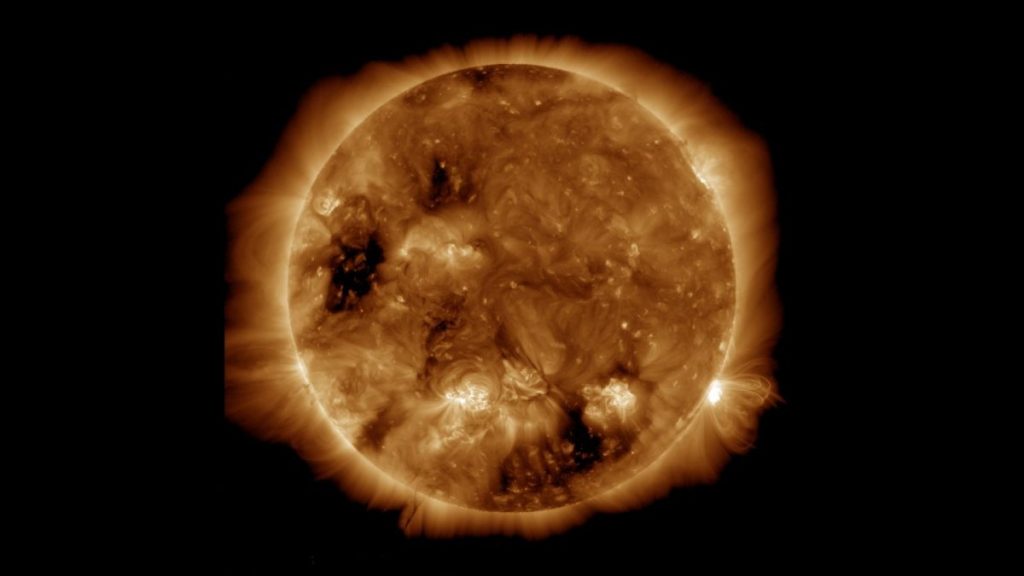
Trio of solar flares produce radio blackouts and dazzling auroras (Image Credit: Space.com)
The sun continues to display a flurry of activity.
Space weather watchers observed a series of powerful solar flares between Saturday (Aug. 27) and Monday (Aug. 29), the most powerful of which registered as an M8-class flare and occurred on Monday at 7:07 a.m. EDT (1207 GMT), SpaceWeather.com reports (opens in new tab). M-class flares are typically described as “moderate,” but can still “cause brief radio blackouts at the poles and minor radiation storms that might endanger astronauts,” according to NASA (opens in new tab).
Scientists rank solar flares into five lettered categories, of which M is the fourth strongest. Within each category, higher numbers represent larger outbursts.
Related: Extreme solar storms can strike out of the blue. Are we really prepared?
High solar activity was also observed in the days prior. On Saturday, the sun ejected an M4-class flare from sunspot AR3088 (opens in new tab). “The glancing blow could spark G1-class geomagnetic storms starting on the 28th and stretching into Aug. 29,” SpaceWeather reported. On Sunday (Aug. 28), the same sunspot unleashed an M6.7-class flare (opens in new tab), causing radio blackouts over much of North America (opens in new tab), the site reported.
In response to the Saturday flare, NOAA’s Space Weather Prediction Center issued an M1 (minor) geomagnetic storm warning (opens in new tab) for Monday. This level of storm could have minor impacts to satellite operations, power grids and animal migration patterns.
Skywatchers in the Northern Hemisphere have been treated to brilliant auroras thanks to the flare’s resulting coronal mass ejection (CME) interacting with Earth’s atmosphere. The auroras were visible as far south as Scotland (opens in new tab), Alberta (opens in new tab), and Montana (opens in new tab), according to skywatchers on Twitter.
A stunning show of #northernlights last night over Calgary. #Aurora #Auroraborealis pic.twitter.com/fqDJpSVzF6August 29, 2022
Most geomagnetic storms resulting from solar flares have minimal effects on Earth or spacecraft, although some powerful storms can damage electrical infrastructure or disrupt radio communications. This year, the sun has been particularly active, with numerous large solar flares and coronal mass ejections wreaking havoc on some satellites and creating stunning aurora displays.
This increased activity could suggest that the sun is beginning to “wake up” from a more restful phase of its regular 11-year cycle of activity. Some forecasters have suggested that the upcoming solar cycle could be among the strongest in recorded history, although our ability to forecast the sun’s behavior remains limited.
Follow Brett on Twitter at @bretttingley (opens in new tab). Follow us on Twitter @Spacedotcom (opens in new tab) or on Facebook (opens in new tab).





